Venice Biennale exhibit comes home to Manila
It’s a long road from Lucban to Venice to the National Museum of Anthropology.
That’s where “Sa kabila ng tabing lamang sa panahong ito (Waiting just behind the curtain of this age)”—the Philippine exhibition from the 2024 Venice Biennale by Mark Salvatus and curator Carlos Quijon Jr.—ended up with a ceremony last week, unveiled inside the National Museum complex.
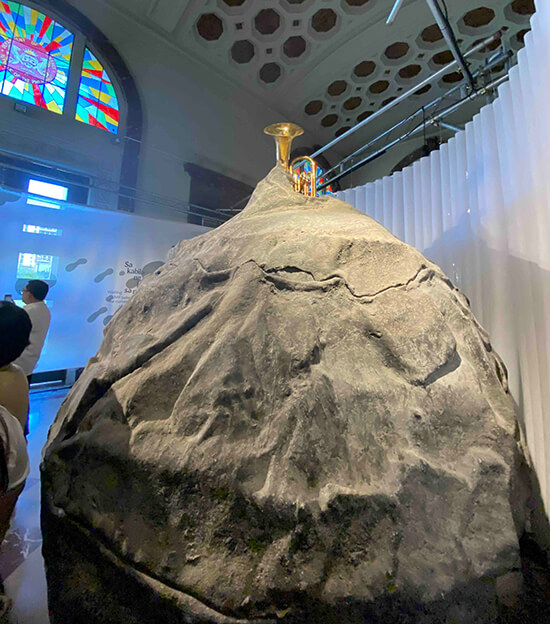
There were opening remarks from special guests National Commission for Culture and the Arts chairman Victorino Mapa Manalo, National Museum of the Philippines director general Jeremy Barns. Plus, a written message from Senator Loren Legarda, who’s been a tireless champion of the Philippines on cultural world stages, from the return to the Biennale 10 years ago to hosting this year’s Frankfurt Buchmesse. “The Venice Biennale has become a mirror of how we see ourselves in the world,” read her statement. “Contemporary art reveals the architecture of our longings, our questions and our contradictions.”
After that, Salvatus and Carlos Quijon Jr. stepped onstage to officially open the installation to the public.
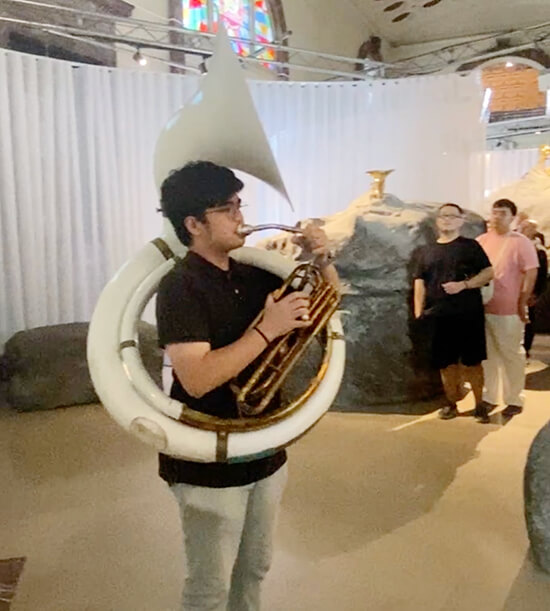
Salvatus brought family (including his mom) and friends from his Quezon home, including a local marching band who performed a composition titled “Lucban,” written by his grandfather.
Indeed, it was a twist on the presentation in Venice, with a small cadre of tubas and brass instruments echoing the atonal horn notes emanating from the installation, then marching through the exhibit to perform the musical piece under a circle of gauzed curtains.

I asked Quijon why the National Museum of Anthropology was chosen for the homecoming. Was there a connection between the Mt. Banahaw setting that inspired Salvatus to construct the work—a grouping of large boulders embedded with brass instruments—and the very idea of “anthropology”? Was there a connection to Hermano Puli, the homegrown revolutionary whose final statements provided the installation’s title, alluding to a somewhat gauzy but palpable version of paradise, just beyond our own consciousness or perhaps outside of history? Quizon simply pointed out: “Chiefly, it’s because of the high ceilings.”
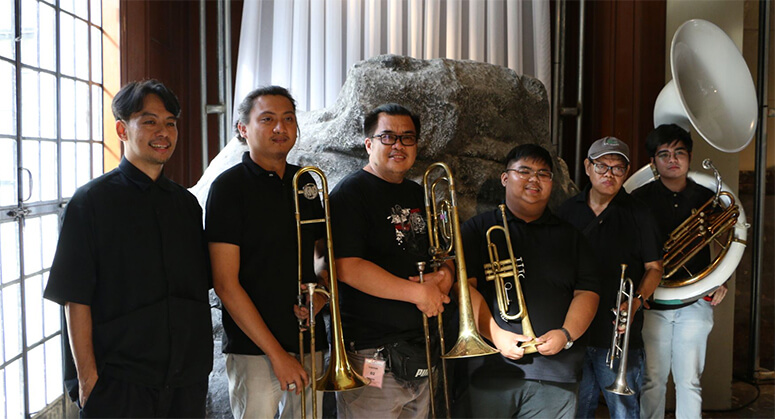
The Salvatus exhibit is imposing, but feels a bit hemmed in within the narrow Gallery 1 space alongside a corridor on the second floor. You can approach from either side, but settle in for a while to view the 15-minute film devised by the artist as a visual accompaniment. Note the spattering of nature sounds, human tongue clicking and occasional coughs among the single horn blats.
For Legarda, with the Philippine Pavilion once again ensconced at Venice Biennale, a decade since returning to its stage, it’s well worth taking time to admire what art brings to our lives.
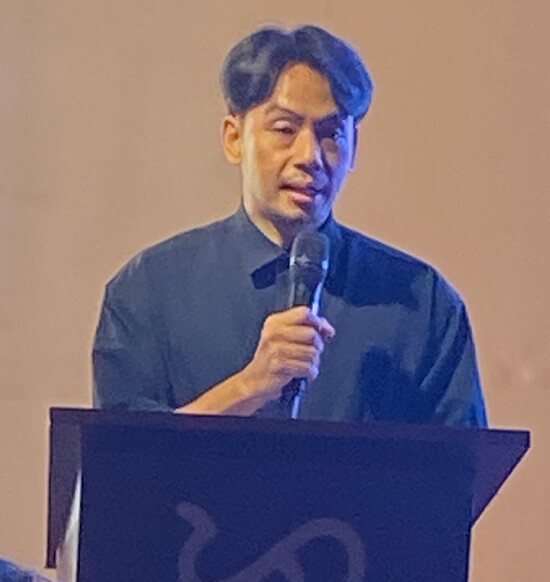
“There are turning points in a nation’s history when we step onto this world stage, not to belong, but to replace what is broken,” she said in her statement. “Our return in 2015 after more than five decades of absence was one such moment, an affirmation that we as a people possess a cultural imagination vast enough, deep enough and urgent enough to take part in the world’s most vital cultural conversations.”
She noted that the Salvatus/Quijon installation “draws us into the living terrain of Mt. Banahaw; both an encounter and a reckoning. This work allows us to glimpse the sacred movements alongside our everyday lives, deeply informing our understanding of the present.”
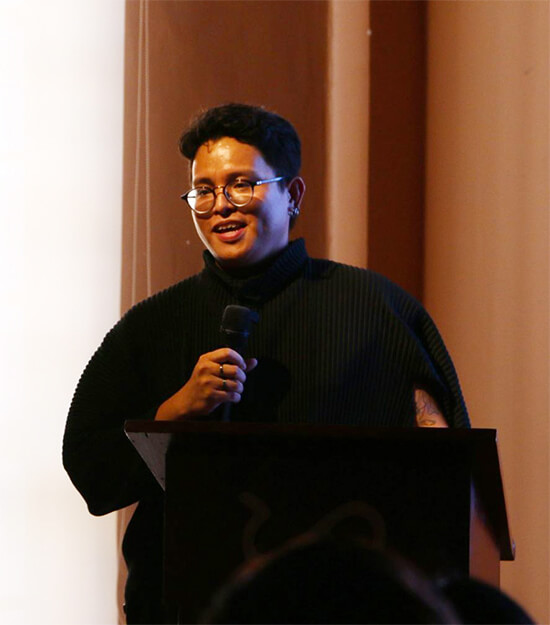
NCCA chair Manalo, who oversaw the Philippine pavilion, spoke about the “the layered world” of Mount Banahaw, and the idea of lakaran, or journey. “The whole exhibit was a defined space,” says Manalo, “but it created a sense of journey with so many corridors created by the curtains.”
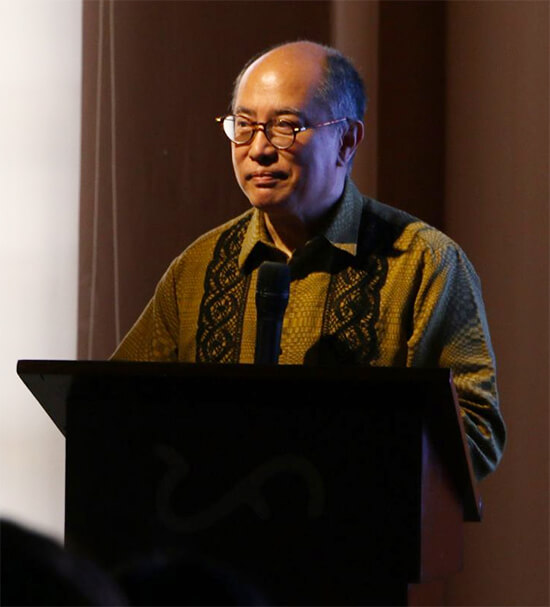
Salvatus describes himself as an “assemblage artist,” and the Venice exhibit was a deeper exploration of this technique. According to Quijon: “Mark’s method of assembly afforded us a way to ask these questions without burdening the artworks to definitely answer them. Here’s the work of an artist keenly aware of the importance of his time and the place he occupies in this world. Here’s an assembly of people, things, histories, urgencies that remind us of our inalienable place in our countries, in our shared land.”
As we enter the exhibit, the Lucban marching band threads its way through the crowd, Salvatus following closely behind with a sheet music stand. It’s a homecoming in more than one sense.
The exhibit stays here until Jan. 26, 2026, then travels again, perhaps to Lucban. Later, I ask Mark what he’s currently working on. He describes it simply as “a puppet show.” One can only imagine what awaits just behind the curtain.


